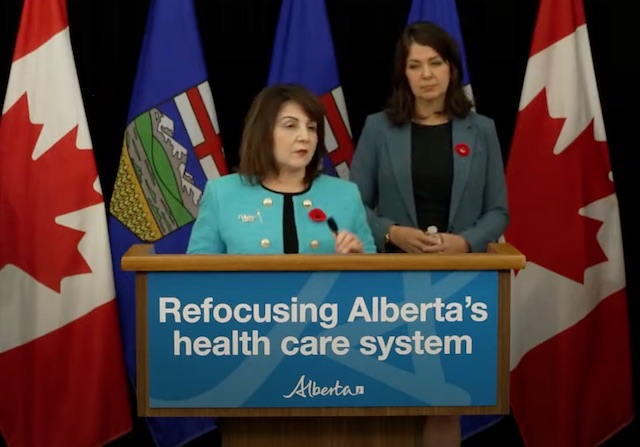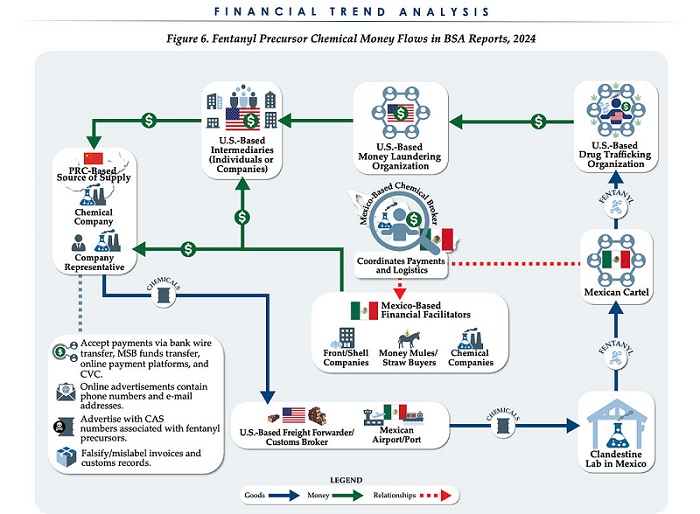Alberta
Health Care Update: Province will deliver health services regionally in seven “health corridors”

Ensuring a successfully refocused health system |
Alberta’s government continues to make progress refocusing the health care system to ensure all Albertans get the care they need.
Under Alberta’s refocused health care system, four fully integrated provincial health agencies are being created to oversee the priority sectors of primary care, acute care, continuing care, and mental health and addiction. Two of the provincial health agencies, Recovery Alberta and Primary Care Alberta, have been established with input from more than 30,000 health care professionals and Albertans.
Additionally, it was recently announced that Minister of Seniors, Community and Social Services Jason Nixon would become the sector minister for the new continuing care provincial health agency. He has now taken on this role and will oversee continuing care as the government works toward standing up the new continuing care agency.
“Refocusing the health care system is a complex process that needs to be done right. We’re committed to taking the time necessary to develop a better health care system for Albertans and the front-line workers who work tirelessly every day to serve their patients.”
Acute Care Alberta transition

Acute care, which includes hospitals, emergency services and surgery care, is a significant part of the health care system, providing critical care to Albertans when they need it most. Alberta’s new acute care provincial health agency, Acute Care Alberta, will become a legal entity in early 2025 and begin operating in spring 2025. As work continues, Alberta’s government is committed to ensuring there are no interruptions to patient care while keeping front-line workers and all Albertans informed and supported.
The new acute care provincial health agency will work directly with service providers to speed up access to high-quality care, reduce wait times and ensure a patient’s journey through the acute care system is efficient and effective.
To support the standing up of Acute Care Alberta, the Acute Care Provincial Health Agency Executive Transition Team has been established. The team includes executive members from Alberta Health and an external special adviser, Dr. Chris Eagle. As a former CEO of Alberta Health Services, Dr. Eagle brings extensive experience in the delivery of acute care services in the province. He will provide valuable insight and expertise that will support the transition of Alberta Health Services from a health authority to a service delivery provider.
Throughout this work, Albertans will continue to access acute care services as they always have, and there will be no impact to front-line health care workers and their continued dedication to delivering health care to Albertans.
Primary Care Alberta now operational

As of Nov. 18, Primary Care Alberta is a legal entity under the leadership of Kim Simmonds, whose first task is to support the transition of operations by setting the agency’s vision and mission, implementing policies and processes, and developing plans. Simmonds and her leadership team will work closely with existing primary care teams at Alberta Health Services to establish the new agency.
“Every Albertan deserves to have a long-term, trusted connection with a family doctor or health care team. We are ready to work to ensure all Albertans have a primary health care home.”
Primary Care Alberta will coordinate and deliver primary health care services across the province, so all Albertans and their families are supported in their day-to-day health needs while avoiding visiting the emergency department and reducing pressures on acute care services.
Integrated approach to health system planning
As part of the refocusing work, Alberta’s government is also taking a new, regional approach to health system planning through seven integrated health corridors.
As a regional grouping within a health care system, a health corridor is designed to reflect how Albertans use health care services in the province based on factors such as travel patterns, access points and local population needs. The corridors consider data related to where Albertans access services and facilities, as well as feedback received during health care refocusing public engagement sessions.
As a result, these corridors will enable an evidence-based approach to planning that will inform decisions about services, workforce and infrastructure across the four new provincial health agencies. This new approach will connect care pathways and support seamless patient journeys throughout the health care system.
“New health care corridors present many opportunities within Alberta’s health care system. Further regionalization of services, in addition to a focus on rural needs and representation, will be essential to ensuring our communities get access to the care they need.”
Health corridors will ensure Alberta’s government will be better able to determine current gaps in the health care system and inform investments in those areas, including operational dollars and funding for capital projects. Getting a better regional understanding of how the health care system is being used will ensure decision-making processes reflect the changing needs of Albertans.
Upcoming engagement opportunities
Alberta’s government remains committed to maintaining open lines of communication with Albertans as it stands up the new provincial health agencies that will form the backbone of Alberta’s refocused health care system.
The input, experiences and feedback Alberta’s government is gathering are helping to create a more effective and efficient health care system that meets the needs of Albertans today and for generations to come.
All Albertans are invited to participate in upcoming telephone town halls with Health Minister Adriana LaGrange to discuss the ongoing work to refocus the health system. Town halls will take place on:
- Nov. 19, from 7:30 a.m. to 9 a.m.
- Nov. 27, from 6:30 p.m. to 8 p.m.
- Nov. 28, from 7:30 a.m. to 9 a.m.
Albertans can register to participate online.
In addition to telephone town halls, Albertans can provide feedback on the refocused health care system online until Dec. 5.
A second round of in-person public engagement is planned for winter/spring 2025 to share information and receive feedback about refocusing work. Those interested in keeping up to date on the health system refocusing work and new engagement opportunities can sign up for an e-newsletter.
Quick facts
- Legislative amendments have been implemented to support the transition to the new health care system.
- To support health service delivery, Alberta Health Services divided the province into five zones: Calgary, Edmonton, south, north and central. The new integrated health system plan will include seven regional health corridors:
- North-West
- North-East
- Edmonton
- Central
- Calgary
- South-West
- South-East
Related information
Alberta
Made in Alberta! Province makes it easier to support local products with Buy Local program

Show your Alberta side. Buy Local. |
When the going gets tough, Albertans stick together. That’s why Alberta’s government is launching a new campaign to benefit hard-working Albertans.
Global uncertainty is threatening the livelihoods of hard-working Alberta farmers, ranchers, processors and their families. The ‘Buy Local’ campaign, recently launched by Alberta’s government, encourages consumers to eat, drink and buy local to show our unified support for the province’s agriculture and food industry.
The government’s ‘Buy Local’ campaign encourages consumers to buy products from Alberta’s hard-working farmers, ranchers and food processors that produce safe, nutritious food for Albertans, Canadians and the world.
“It’s time to let these hard-working Albertans know we have their back. Now, more than ever, we need to shop local and buy made-in-Alberta products. The next time you are grocery shopping or go out for dinner or a drink with your friends or family, support local to demonstrate your Alberta pride. We are pleased tariffs don’t impact the ag industry right now and will keep advocating for our ag industry.”
Alberta’s government supports consumer choice. We are providing tools to help folks easily identify Alberta- and Canadian-made foods and products. Choosing local products keeps Albertans’ hard-earned dollars in our province. Whether it is farm-fresh vegetables, potatoes, honey, craft beer, frozen food or our world-renowned beef, Alberta has an abundance of fresh foods produced right on our doorstep.
Quick facts
- This summer, Albertans can support local at more than 150 farmers’ markets across the province and meet the folks who make, bake and grow our food.
- In March 2023, the Alberta government launched the ‘Made in Alberta’ voluntary food and beverage labelling program to support local agriculture and food sectors.
- Through direct connections with processors, the program has created the momentum to continue expanding consumer awareness about the ‘Made in Alberta’ label to help shoppers quickly identify foods and beverages produced in our province.
- Made in Alberta product catalogue website
Related information
Alberta
Province to expand services provided by Alberta Sheriffs: New policing option for municipalities

Expanding municipal police service options |
Proposed amendments would help ensure Alberta’s evolving public safety needs are met while also giving municipalities more options for local policing.
As first announced with the introduction of the Public Safety Statutes Amendment Act, 2024, Alberta’s government is considering creating a new independent agency police service to assume the police-like duties currently performed by Alberta Sheriffs. If passed, Bill 49 would lay additional groundwork for the new police service.
Proposed amendments to the Police Act recognize the unique challenges faced by different communities and seek to empower local governments to adopt strategies that effectively respond to their specific safety concerns, enhancing overall public safety across the province.
If passed, Bill 49 would specify that the new agency would be a Crown corporation with an independent board of directors to oversee its day-to-day operations. The new agency would be operationally independent from the government, consistent with all police services in Alberta. Unlike the Alberta Sheriffs, officers in the new police service would be directly employed by the police service rather than by the government.
“With this bill, we are taking the necessary steps to address the unique public safety concerns in communities across Alberta. As we work towards creating an independent agency police service, we are providing an essential component of Alberta’s police framework for years to come. Our aim is for the new agency is to ensure that Albertans are safe in their communities and receive the best possible service when they need it most.”
Additional amendments would allow municipalities to select the new agency as their local police service once it becomes fully operational and the necessary standards, capacity and frameworks are in place. Alberta’s government is committed to ensuring the new agency works collaboratively with all police services to meet the province’s evolving public safety needs and improve law enforcement response times, particularly in rural communities. While the RCMP would remain the official provincial police service, municipalities would have a new option for their local policing needs.
Once established, the agency would strengthen Alberta’s existing policing model and complement the province’s current police services, which include the RCMP, Indigenous police services and municipal police. It would help fill gaps and ensure law enforcement resources are deployed efficiently across the province.
Related information
-

 Business2 days ago
Business2 days agoChina, Mexico, Canada Flagged in $1.4 Billion Fentanyl Trade by U.S. Financial Watchdog
-

 2025 Federal Election2 days ago
2025 Federal Election2 days agoTucker Carlson Interviews Maxime Bernier: Trump’s Tariffs, Mass Immigration, and the Oncoming Canadian Revolution
-

 Business2 days ago
Business2 days agoDOGE Is Ending The ‘Eternal Life’ Of Government
-

 espionage2 days ago
espionage2 days agoEx-NYPD Cop Jailed in Beijing’s Transnational Repatriation Plot, Canada Remains Soft Target
-

 2025 Federal Election1 day ago
2025 Federal Election1 day agoBREAKING from THE BUREAU: Pro-Beijing Group That Pushed Erin O’Toole’s Exit Warns Chinese Canadians to “Vote Carefully”
-

 2025 Federal Election2 days ago
2025 Federal Election2 days agoCanada drops retaliatory tariffs on automakers, pauses other tariffs
-

 Daily Caller1 day ago
Daily Caller1 day agoDOJ Releases Dossier Of Deported Maryland Man’s Alleged MS-13 Gang Ties
-

 Daily Caller1 day ago
Daily Caller1 day agoTrump Executive Orders ensure ‘Beautiful Clean’ Affordable Coal will continue to bolster US energy grid




